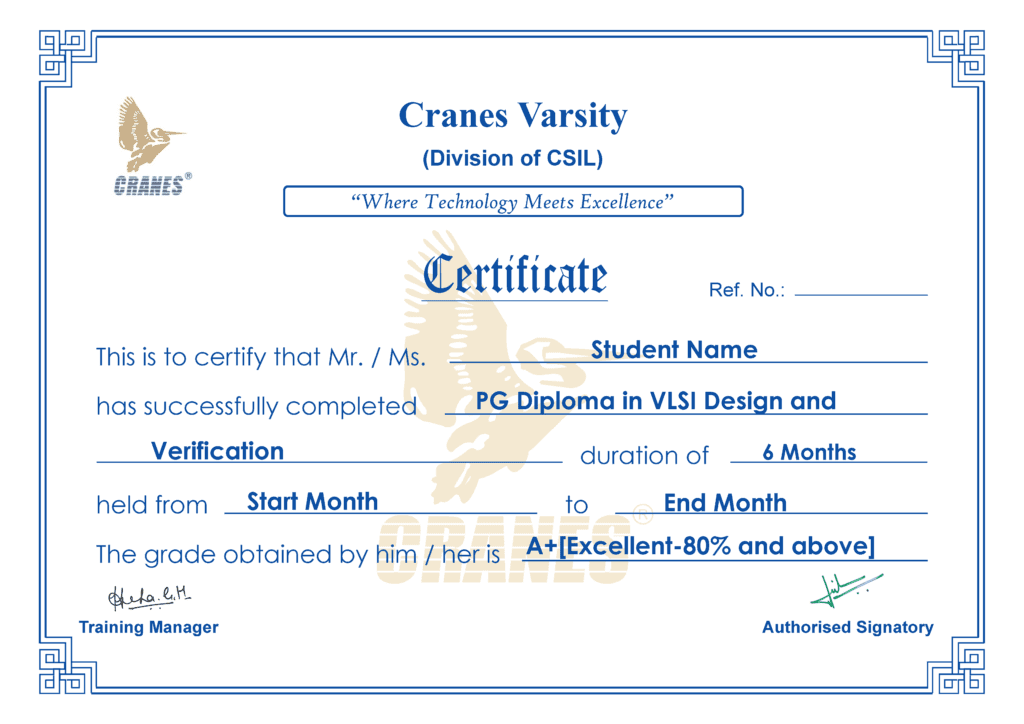PG Diploma in VLSI design and Verification
100% JOB Assured with Globally Accepted Certificate
Intermediate
Overview
IOT Certification Course Online for Working Professional
Description
VLSI Course for Working Professional
Online/Offline VLSI Training Course designed exclusively for busy working professionals who aspire to enhance their skills and knowledge in the dynamic field of Very Large Scale Integration (VLSI).
VLSI is a specialized field within electronics and semiconductor engineering. Transitioning from a non-VLSI domain to the VLSI domain can offer several advantages for a working professional. Because VLSI domain has High Demand and Growth Potential, Technological Advancements, Lucrative Salaries, Challenging and Interesting Work, and many others benefits. It’s important to note that transitioning to the VLSI domain requires dedication, continuous learning, and acquiring domain-specific knowledge. Professionals should carefully assess their interests, aptitude for technical work, and long-term career goals before making the transition. A certified course in VLSI Course will help in meeting this objective.
Master the Art of VLSI Design with Our Comprehensive Course
VLSI Design Course at Cranes Varsity specially designed for people who are aspiring to transit to semiconductor industry. In a PG Diploma in VLSI Design and Verification course with placements, you will gain comprehensive knowledge and skills related to the design and verification of integrated circuits. You will be learning Digital Electronics, C Programming, Verilog, VLSI Design Flow, VLSI Layout and Physical Design, RTL Design and Synthesis, FPGA, System Verilog and Verification Methodologies. You will also learn SDLC and Devops as part of your curriculum.
By completing a PG Diploma in VLSI Design and Verification, you will be equipped with the skills necessary to work as a VLSI design engineer or verification engineer in the semiconductor industry. You will have a strong understanding of the entire VLSI design flow, from concept to manufacturing, and be proficient in using industry-standard tools and methodologies to design and verify complex integrated circuits. One can do Online VLSI training also. Student can choose between VLSI Online Course and offline course.
Our industry-experienced faculty will guide you through hands-on projects using industry-standard tools. What sets us apart is our commitment to job placement. Through our strong industry connections, we provide dedicated career support, ensuring you land a promising position in renowned semiconductor companies.
Our dedicated career development sessions, resume building assistance, and interview preparation help you to enhance your employability. Our strong industry connections and collaborations enable us to provide job placement assistance, connecting you with top companies in the automotive sector. We take pride in our high placement record and strive to help you kick-start a successful career in VLSI Design and Verification.
Project stream:
- Design and Simulation of Digital Controller/CPU Core/Protocols such as UART, SPI, I2C, AXI4
- Design, Simulation, Implementation and Verification of Digital Controllers, ALU Cores and protocols such as UART, SPI, I2C, AXI4 on FPGA Board.
- SV Verification of Digital Controller/CPU Core/Protocols such as UART, SPI, I2C, AXI4
- UVM Verification of Digital Controller/CPU Core/Protocols such as UART, SPI, I2C, AXI4
VLSI is a specialized field within electronics and semiconductor engineering. Transitioning from a non-VLSI domain to the VLSI domain can offer several advantages for a working professional. Because VLSI domain has High Demand and Growth Potential, Technological Advancements, Lucrative Salaries, Challenging and Interesting Work, and many others benefits. It’s important to note that transitioning to the VLSI domain requires dedication, continuous learning, and acquiring domain-specific knowledge. Professionals should carefully assess their interests, aptitude for technical work, and long-term career goals before making the transition.
In a PG Diploma in VLSI Design and Verification course with placements, you will gain comprehensive knowledge and skills related to the design and verification of integrated circuits. You will be learning Digital Electronics, C Programming, Verilog, VLSI Design Flow, CMOS Circuit Design, VLSI Layout and Physical Design, RTL Design and Synthesis, FPGA, System Verilog and Verification Methodologies. You will also learn SDLC and Devops as part of your curriculum.
By completing a PG Diploma in VLSI Design and Verification, you will be equipped with the skills necessary to work as a VLSI design engineer or verification engineer in the semiconductor industry. You will have a strong understanding of the entire VLSI design flow, from concept to manufacturing, and be proficient in using industry-standard tools and methodologies to design and verify complex integrated circuits.
Our industry-experienced faculty will guide you through hands-on projects using industry-standard tools. What sets us apart is our commitment to job placement. Through our strong industry connections, we provide dedicated career support, ensuring you land a promising position in renowned semiconductor companies.
Our dedicated career development sessions, resume building assistance, and interview preparation help you to enhance your employability. Our strong industry connections and collaborations enable us to provide job placement assistance, connecting you with top companies in the automotive sector. We take pride in our high placement record and strive to help you kick-start a successful career in VLSI Design and Verification.
VLSI is a specialized field within electronics and semiconductor engineering. Transitioning from a non-VLSI domain to the VLSI domain can offer several advantages for a working professional. Because VLSI domain has High Demand and Growth Potential, Technological Advancements, Lucrative Salaries, Challenging and Interesting Work, and many others benefits. It’s important to note that transitioning to the VLSI domain requires dedication, continuous learning, and acquiring domain-specific knowledge. Professionals should carefully assess their interests, aptitude for technical work, and long-term career goals before making the transition.
In a PG Diploma in VLSI Design and Verification program, you will gain comprehensive knowledge and skills related to the design and verification of integrated circuits. You will be learning Digital Electronics, C Programming, Verilog, VLSI Design Flow, CMOS Circuit Design, VLSI Layout and Physical Design, RTL Design and Synthesis, FPGA, System Verilog and Verification Methodologies. You will also learn SDLC and Devops as part of your curriculum.
By completing a PG Diploma in VLSI Design and Verification, you will be equipped with the skills necessary to work as a VLSI design engineer or verification engineer in the semiconductor industry. You will have a strong understanding of the entire VLSI design flow, from concept to manufacturing, and be proficient in using industry-standard tools and methodologies to design and verify complex integrated circuits.
Our industry-experienced faculty will guide you through hands-on projects using industry-standard tools. What sets us apart is our commitment to job placement. Through our strong industry connections, we provide dedicated career support, ensuring you land a promising position in renowned semiconductor companies.
Our dedicated career development sessions, resume building assistance, and interview preparation help you to enhance your employability. Our strong industry connections and collaborations enable us to provide job placement assistance, connecting you with top companies in the automotive sector. We take pride in our high placement record and strive to help you kick-start a successful career in embedded and automotive systems.
The IoT Certification course Online is designed for those interested in learning about IoT principles and applications. By the end of the course, the student will be able to develop, implement, integrate, and test complex IoT software.
Working professionals interested to improve their expertise in IoT can join this 5-month PG diploma in IOT course, designed to cater to the needs of working professional skill improvement.
Learn IoT Online Course at Cranes Varsity
Cranes Varsity provides Working Professionals with a disciplined framework for learning and improving technical skills. They are well-planned and delivered using examples to make the lectures more fun and clear. We want to help working professionals build a broader set of skill development through rigorous upskill and reskill models.
If you are looking to get started in IoT, a certification program that’s tailored to starting companies is the right choice. The IoT Certification Courses Online will be delivered in a series of classroom-based, instructor-led sessions and self-paced on-demand learning materials.
This certification will give you the knowledge and skills to progress in your career as an IoT Specialist, IoT Consultant, Strategy Manager or Product Manager. It will also give you the opportunity to gain a full understanding of what an effective IoT strategy entails and how it can transform your business.
The training includes a series of classroom-based, instructor-led sessions and self-paced on-demand learning materials that will help you prepare for the certification exam.
With some knowledge about computer programming languages and experience in working with IoT devices, you can easily get into this industry.
Cranes Varsity provides both Online and Offline training and offers services to aspiring individuals from training to placement as part of the Internet Things of (IoT) Training Courses with over 100+ participants placed in various multinational companies including TATA Elxsi, UST Global, Genpact, Embedded UR, Symphony, Capgemini, Vodafone, NISSAN, Wipro, IBM, Tech Mahindra, Western Digital, Mphasis, Saffron, Verifone, ZF, HTC, LG Soft, Toshiba, Samsung, etc.
IoT Online Course Modules
- Fundamentals of Electronics and Embedded Systems
- Programming in C following MISRA C
- Data Structures and Algorithms
- C++
- Linux System Prog and Socket Programming
- ARM 7 & Cortex M3 programming using Embedded C
- Programming using ARM Cortex M3 based MCUàSTM32F446
- Embedded Protocols – UART, SPI, I2C
- RTOS – Hands on using Free RTOS of Amazon
- Python Programming
- Architecture and Connectivity Model
- Edge Node Computing
- IoT Protocols – MQTT, AMQP, CoAP
- Gateway Computing
- Security Using Industrial IOT
- Embedded Project development using wired/wireless technology such as GPS, GSM, BLE, Wi-Fi and sensors
- Application development based on Data Structure (eg: Flood fund releasing data, cyber management systems, Bank management system, contact management system)
- Concurrent server to replicate a chat application using socket programming.
- Ecommerce Server backend using socket programming
- IoT based Advanced Security System
- Remote monitoring and controlling using IOT communication Protocol
- Ubuntu (Linux OS, with gcc compiler)
- Lpc2129, Keil Micro vision
Course Content
- Introduction to Embedded System
- Electrostatic Discharge Essentials
- Fundamentals of Booting for Embedded Processors
- Securing Embedded Systems
- SDLC – Development Life cycles and Frameworks
- Agile – an iterative and responsive software development methodology
- Development Bible
- Development and Operations
- Embedded Testing
- IoT Security
- Introduction to C
- Data types and Operators
- Conditional Statements
- Loop Control Structures
- Modular Programming using Functions
- Storage Classes
- Working with Multiple Files
- Preprocessor
- Conditional Inclusion
- Arrays
- Strings
- GDB Debugger
- Introduction to the operating system
- Text Editors: Vim and gedit
- Finding Linux Documentation
- System Navigation command
- Manipulating Data
- Process Related commands Filtering
- Shell scripting
- Input and output
- Arithmetic Expression
- Decision making
- Looping Constructs
- Introduction to ARM Processor
- GPIO- General Purpose
- Input output
- LCD programming
- ADC Programming
- Timers
- Counters
- Introduction to Python
- Python Data types and Conditions
- Control Statements
- Python Functions
- Default arguments
- Functions with variable number of args
- Scope of Variables
- Global Specifier
- Working with multiple files
- List and Tuple
- List Methods
- List Comprehension
- Map and filter functions String
- Set and Dictionary
- Designing Methodology
- Top-Down Methodology
- Bottom-Up Methodology
- Verilog data types
- Verilog Scalar /Vector
- Verilog Arrays
- GATE LEVEL MODELING
- Gate Instantiate
- Design RTL From logic Diagram
- Logic Gate primitive
- Delay in Gate level Design
- Learning about different types of counters, register
- Data Flow modeling
- Continuous Assignment statement
- Synchronous Finite State Machine Design.
- Structured procedural Statement: Always Statement, Procedural Statement
- Blocking Statement, Non-Blocking statement
- Timing Control Statement: Delay based timing control, Event Based timing control
- Conditional Statement: If..else statement, case statement: casex, casez
- Loop: While, do while, for, for each, forever, repeat.
- Block statement, Sequential block,
- Parallel Block
- FSM: Mealy machine, Moore machine
- Flip flop Counters, PWM
- Useful Of Modeling Technique
- All combinational and sequential circuit using Verilog Delay Control Statement: Intra delay, inter delay, rise delay, fall delay
- Procedural continuous, Assignment Statement
- Deassign Statement, force statement, Release statement
- CRC checking, UART
- Introduction to FPGA
- FPGA Architecture
- CLB, I/O blocks
- CPLD, FPGA, FPGA Working, Design Flow
- Interconnects, Tool Installation
- working Designing basic FPGS example (Adder, Subtractor, Counter)
- Design and Implementation of projects on FPAG
- Implementation of Counter – up counter, down counter, up down counter, mod counter, Johnson counter, ring counter
- UART, SPI, I2C, AXI4 on FPGA
- Introduction, Running Tcl, Simple Text Output, assigning values to variables, expr, Compute, Put, While loop, For and incr, proc,
- Variable scope – global and upvar, TCL List.
- String Subcommands – length index range, String comparisons
- Associative Arrays, Array – Iterating and use in procedures, Dictionaries, File Access, Information about Files – file, glob
- Invoking Subprocesses from Tcl – exec, open, Info.
- Modularization – source, building reusable libraries – packages and namespaces,
- Creating Commands – eval
- UART: Universal Asynchronous Receiver and Transmitter
- SPI: Serial Peripheral Interface.
- I2C: Inter-Integrated Circuit.
- VLSI Verification Specialization
- Introduction of System Verilog, Need of system Verilog
- Environment of Verification
- Data types -2satete, 4 state, enum , string, structure, union, class
- Array- Fixed array- packed and unpacked array
- Dynamic Array, Associative array Queues
- Process: – Fork-join, Fork-join any, Fork-join none, Wait-fork OOPS- Inheritance, Polymorphism,
- Data hiding, Encapsulation
- Class- Deep copy, shallow copy, Overriding class, Coverage: Functional Coverage, Cross coverage.
- Explanation of assertion with example
- Explanation of coverage with example
- Working on verification environment
- Introduction UVM: why UVM
- UVM Objects: Base classes,
- UVM Macros, UVM Base Class Methods
- UVM Phases, UVM Config DB, UVM Reporting Mechanism,
- UVM TLM Ports, Analysis, Fifo, UVM socket concept, UVM Callbacks
- UVM test Bench Components and UVM test Benches.
- Verification of Protocol with SV/UVM – UART
- Verification of Protocols with SV/UVM – I2C
- Verification of Protocols with SV/UVM – SPI
- Verification of Protocols with SV/UVM–AXI
- Introduction to Embedded System
- Electrostatic Discharge Essentials
- Fundamentals of Booting for Embedded Processors
- Securing Embedded Systems
- SDLC – Development Life cycles and Frameworks
- Agile – an iterative and responsive software development methodology
- Development Bible
- Development and Operations
- Embedded Testing
- IoT Security
- Introduction to C
- Data types and Operators
- Conditional Statements
- Loop Control Structures
- Modular Programming using Functions
- Storage Classes
- Working with Multiple Files
- Preprocessor
- Conditional Inclusion
- Arrays
- Strings
- GDB Debugger
- Introduction to the operating system
- Text Editors: Vim and gedit
- Finding Linux Documentation
- System Navigation command
- Manipulating Data
- Process Related commands Filtering
- Shell scripting
- Input and output
- Arithmetic Expression
- Decision making
- Looping Constructs
- Introduction to ARM Processor
- GPIO- General Purpose
- Input output
- LCD programming
- ADC Programming
- Timers
- Counters
- Introduction to Python
- Python Data types and Conditions
- Control Statements
- Python Functions
- Default arguments
- Functions with variable number of args
- Scope of Variables
- Global Specifier
- Working with multiple files
- List and Tuple
- List Methods
- List Comprehension
- Map and filter functions String
- Set and Dictionary
- Designing Methodology
- Top-Down Methodology
- Bottom-Up Methodology
- Verilog data types
- Verilog Scalar /Vector
- Verilog Arrays
- GATE LEVEL MODELING
- Gate Instantiate
- Design RTL From logic Diagram
- Logic Gate primitive
- Delay in Gate level Design
- Learning about different types of counters, register
- Data Flow modeling
- Continuous Assignment statement
- Synchronous Finite State Machine Design.
- Structured procedural Statement: Always Statement, Procedural Statement
- Blocking Statement, Non-Blocking statement
- Timing Control Statement: Delay based timing control, Event Based timing control
- Conditional Statement: If..else statement, case statement: casex, casez
- Loop: While, do while, for, for each, forever, repeat.
- Block statement, Sequential block,
- Parallel Block
- FSM: Mealy machine, Moore machine
- Flip flop Counters, PWM
- Useful Of Modeling Technique
- All combinational and sequential circuit using Verilog Delay Control Statement: Intra delay, inter delay, rise delay, fall delay
- Procedural continuous, Assignment Statement
- Deassign Statement, force statement, Release statement
- CRC checking, UART
- Introduction to FPGA
- FPGA Architecture
- CLB, I/O blocks
- CPLD, FPGA, FPGA Working, Design Flow
- Interconnects, Tool Installation
- working Designing basic FPGS example (Adder, Subtractor, Counter)
- Design and Implementation of projects on FPAG
- Implementation of Counter – up counter, down counter, up down counter, mod counter, Johnson counter, ring counter
- UART, SPI, I2C, AXI4 on FPGA
- Introduction, Running Tcl, Simple Text Output, assigning values to variables, expr, Compute, Put, While loop, For and incr, proc,
- Variable scope – global and upvar, TCL List.
- String Subcommands – length index range, String comparisons
- Associative Arrays, Array – Iterating and use in procedures, Dictionaries, File Access, Information about Files – file, glob
- Invoking Subprocesses from Tcl – exec, open, Info.
- Modularization – source, building reusable libraries – packages and namespaces,
- Creating Commands – eval
- UART: Universal Asynchronous Receiver and Transmitter
- SPI: Serial Peripheral Interface.
- I2C: Inter-Integrated Circuit.
- VLSI Verification Specialization
- Introduction of System Verilog, Need of system Verilog
- Environment of Verification
- Data types -2satete, 4 state, enum , string, structure, union, class
- Array- Fixed array- packed and unpacked array
- Dynamic Array, Associative array Queues
- Process: – Fork-join, Fork-join any, Fork-join none, Wait-fork OOPS- Inheritance, Polymorphism,
- Data hiding, Encapsulation
- Class- Deep copy, shallow copy, Overriding class, Coverage: Functional Coverage, Cross coverage.
- Explanation of assertion with example
- Explanation of coverage with example
- Working on verification environment
- Introduction UVM: why UVM
- UVM Objects: Base classes,
- UVM Macros, UVM Base Class Methods
- UVM Phases, UVM Config DB, UVM Reporting Mechanism,
- UVM TLM Ports, Analysis, Fifo, UVM socket concept, UVM Callbacks
- UVM test Bench Components and UVM test Benches.
- Verification of Protocol with SV/UVM – UART
- Verification of Protocols with SV/UVM – I2C
- Verification of Protocols with SV/UVM – SPI
- Verification of Protocols with SV/UVM–AXI
Generic:
Electronics and Embedded Hardware Familiarization – 08 Days
- Introduction to Embedded System
- Securing Embedded Systems
- Electrostatic Discharge Essentials
- Fundamentals of Booting for Embedded Processors
SDLC – 04 Days
- SDLC – Development Life cycles and Frameworks
- Development and Operations
- Agile – an iterative and responsive software development methodology
- Embedded Testing
- Development Bible
- IoT Security
Programming in C following MISRA C – 12 days
- Introduction to C
- Loop Control Structures
- Working with Multiple Files
- Arrays
- Data types and Operators
- Modular Programming using Functions
- Preprocessor
- Strings
- Conditional Statements
- Storage Classes
- Conditional Inclusion
- GDB Debugger
Linux Commands & Shell Scripting – 04 days
- Introduction to the operating system
- System Navigation command
- Shell scripting Input and output
- Text Editors: Vim and gedit
- Manipulating Data
- Arithmetic Expression
- Finding Linux Documentation
- Process Related commands Filtering
- Decision making Looping Constructs
LPC/ARM Cortex M3 Programming using Embedded C – 04 days
- Introduction to ARM Processor
- ADC Programming
- GPIO- General Purpose Input Output
- Timers
- LCD programming
- Counters
System Programming using C – 08 Days
- Building an executable
- Advanced Data Types
- Context management
- Coding practices
- Debugging & Tracing
- Referencing data and function
- Linux fundamentals
- Memory Management
- Working with registers
- C library functions
Python Programming – 04 days
- Introduction to Python
- Python Functions
- Scope of Variables
- List and Tuple
- Map and filter functions
- ADC Programming
- Python Data types and Conditions
- Default arguments
- Global Specifier
- List Methods
- String
- Timers
- Control Statements
- Functions with variable number of args
- Working with multiple files
- List Comprehension
- Set and Dictionary
- Counters
Verification & Validation -04 days
- Fundamentals of testing
- Test techniques
- Testing Throughout the Software Development Lifecycle
- Test Infrastructure
- Static Techniques
- Test Monitoring & Control
Embedded Specialization:
ARM Bare Metal Programming (ARM Cortex)- 10 Days
- VIC- Interrupt programming
- PWM programming
- UART programming
- KEYPAD programming
- PLL programming
- I2C programming
- DAC programming
- RTC and WDT programming
- SPI programming
ARM Bare Metal Programming (STM) – 05 Days
- Introduction to STM32F411 RE Microcontroller
- Timer Programming on STM32
- GPIO Programming on STM32
- Interrupt Programming on STM32
- UART Programming on STM32
DevOps for Embedded Software Development – 04 days
- Overview of DevOps
- Version Control with Git
- Packaging, Release and Continuous Integration
IoT Specialization:
Advanced Python and Unit Testing- 08 Days
- Object Oriented Programming
- Regular Expression
- Testing Fundamentals
- Decorators
- Iterators
- Overloading Operator
- Finding Patterns of Text
- Unit Testing with Pytest
- UI Development with Tkinter
- UI development Mini Project
- Inheritance
- Meta characters
- Working with JSON
- Containers
IOT Connectivity Protocols – 05 days
- Serial Communication using UART. Interfacing Bluetooth, RFID.
- Basics of MQTT, COAP protocols
- Interfacing GPS and GSM modules with Raspberry
IOT cloud data processing and analysis – 06 days
- Connecting to Cloud. Analyze and Visualize Data
- Remote control using Android Device
- Key Considerations and Challenges: Interoperability, Standards
- Start TLS process, SMTP server using Raspberry.
- Arduino and Node MCU interfacing
- Secure Devices, Communication, Data & Cloud.
- Web Application using Flask Framework
- Smart Gateway: smart home/smart car/smart grid
- Industrial IoT, Sensor Technology and Applications
Data Analysis and Visualization using Tableau – 06 days
- Tableau Introduction
- Working with sets
- Connect with Different Data sources
- Cards in Tableau
- Tableau Calculations using Functions
- Traditional Visualization vs Tableau
- Creating Groups
- Visual Analytics
- Charts, Dash-board
- Building Predictive Models
- Tableau Architecture
- Data types in Tableau
- Parameter Filters
- Joins and Data Blending
- Dynamic Dashboards and Stories
Hiring Partners


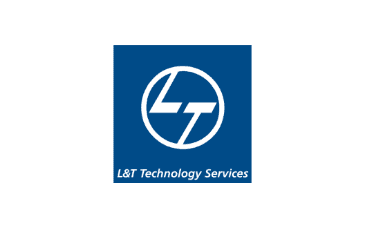
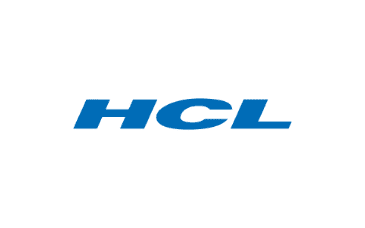

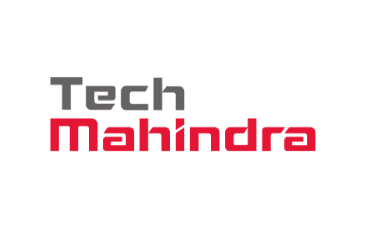
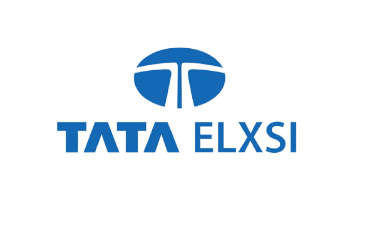
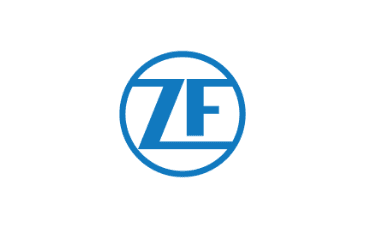

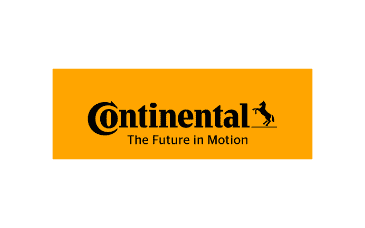
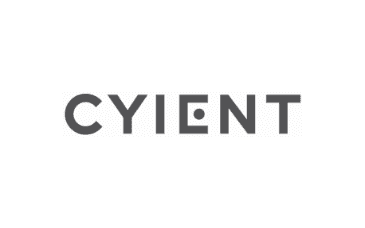

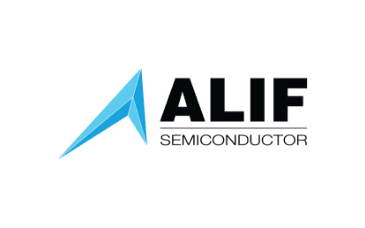



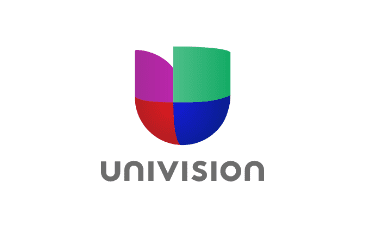
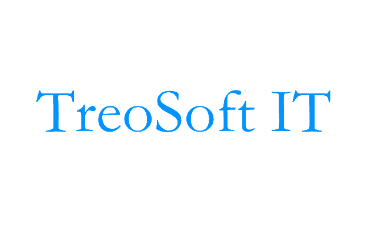
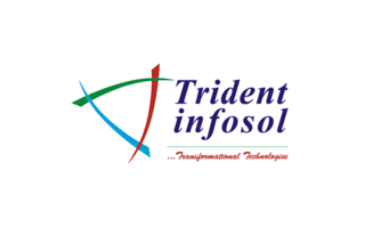

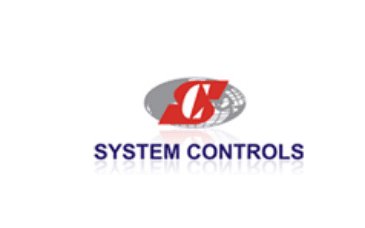
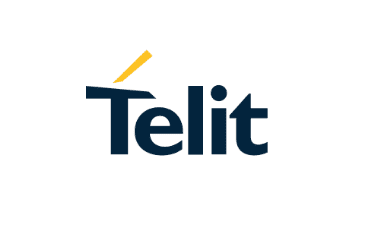


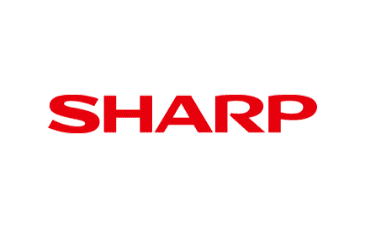


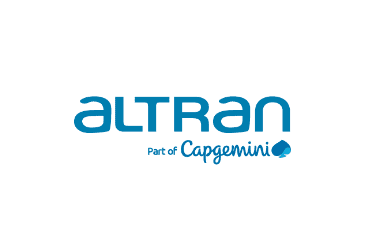
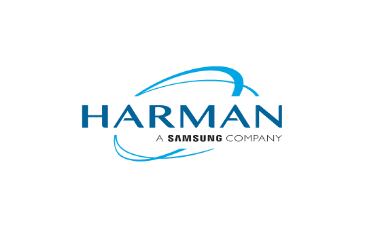

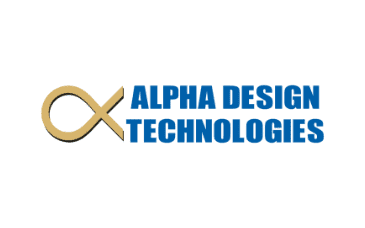








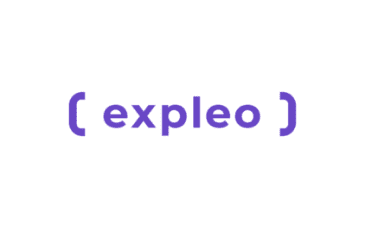
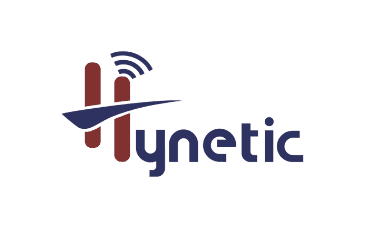
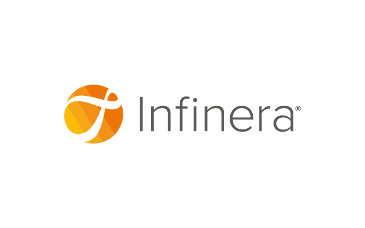
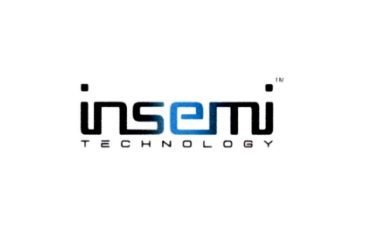


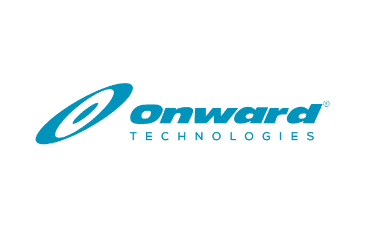

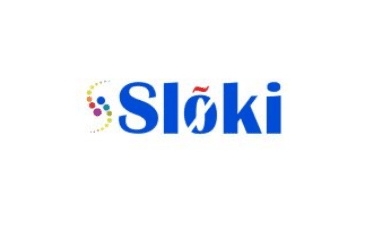
FAQs
What is VLSI?
VLSI stands for Very Large Scale Integration. It is a field of electronics engineering that deals with the design, creation, and manufacturing of integrated circuits (ICs) that contain thousands to millions of transistors on a single chip.
A VLSI Design Course is an educational program that provides students with a comprehensive understanding of VLSI design, fabrication, and testing methodologies. It covers various aspects, including digital and analog circuit design, FPGA programming, ASIC design flow, and system-on-chip (SoC) integration.
Who can take up a VLSI Course?
Engineering students or professionals with a background in electronics, electrical engineering, or related fields can pursue a VLSI course. However, some courses may have specific prerequisites, so it is essential to check the requirements before enrolling.
What are the key topics covered in a VLSI Course?
A typical VLSI course covers the following key topics:
- Introduction to VLSI and its history
- Semiconductor fundamentals and device physics
- Digital and analog integrated circuit design
- VLSI design methodologies
- CMOS technology and fabrication process
- FPGA architecture and programming
- ASIC design flow and testing
- SystemVerilog and VHDL for VLSI design
- Design for Testability (DFT) techniques
- Physical design and layout
- Introduction to System-on-Chip (SoC) design
- Low power VLSI design techniques
What are the benefits of taking a VLSI Course?
Taking a VLSI course can offer several benefits, including:
- Acquiring specialized knowledge in VLSI design and technology.
- Enhancing job prospects in the semiconductor and electronics industries.
- Gaining hands-on experience with industry-standard design tools.
- Understanding the latest trends and advancements in VLSI.
- Opportunities to work on real-world VLSI projects.
Are there any prerequisites for a VLSI Course?
The prerequisites for a VLSI course can vary based on the program’s level and complexity. However, a basic understanding of electronics and digital logic design is usually helpful. Some advanced courses may require prior knowledge of programming languages like C/C++ and digital circuit theory.
What are the career options after completing a VLSI Course?
After completing a VLSI course, individuals can explore various career paths, including:
- VLSI Design Engineer
- ASIC Design Engineer
- FPGA Engineer
- Physical Design Engineer
- Verification Engineer
- CAD Engineer (Computer-Aided Design)
- SoC Integration Engineer
- Semiconductor Process Engineer
Is the VLSI Design easy to learn?
VLSI is not tough for a person with an Electronics background. If he is strong in digital concepts and knows how to write programs then definitely VLSI design and Verification will be easier.
Is coding required for VLSI?
Yes, Coding is required for VLSI frontend development for designing and verification. In VLSI, the programming languages for IC design are called hardware description languages (HDLs). These include VHDL, Verilog, System Verilog, C, and scripting languages like Perl and TCL.
Can I do a VLSI Design Course online?
Yes, VLSI Course can be done online as it requires only EDA software tools.
Does Cranes Varsity offer placement assistance after VLSI Design Course completion?
Yes, 100% assistance will be provided by Cranes Varsity to get a job after the VLSI Design Course completion.
What are the prerequisites for VLSI Course enrollment?
An Engineering degree in Electronics with good programming and hardware knowledge.
What courses does Cranes Varsity offer in VLSI Design and Verification?
Cranes Varsity offers a range of courses in VLSI Design and Verification, including:
• Post Graduate Diploma in VLSI Design
• Certificate Courses in VLSI Verification
• Short-term courses on Digital VLSI Design, Analog Design, and ASIC Design
• Corporate training programs for industry professionals
Who can benefit from VLSI courses at Cranes Varsity?
Our VLSI courses cater to:
• Engineering graduates in Electronics, Electrical, and Computer Science.
• Postgraduates looking to specialize in VLSI design and verification.
• Professionals in the semiconductor industry wanting to enhance their skills.
• Research scholars aiming to build a career in VLSI technologies.
What is the duration of VLSI courses at Cranes Varsity?
The duration of the courses varies:
• Post Graduate Diploma in VLSI Design: 6 to 9 months.
• Certificate Courses: 3 to 6 months.
• Short-term courses: 1 to 3 months, depending on the specific topic.
What are the eligibility criteria for enrolling in VLSI courses?
Eligibility criteria generally include:
• Bachelor’s degree in Electronics, Electrical Engineering, Computer Science, or related fields.
• A basic understanding of digital and analog electronics is advantageous but not mandatory for beginners.
What programming languages are taught in VLSI courses?
In our VLSI courses, you will primarily learn:
• Verilog and VHDL for hardware description.
• SystemVerilog for advanced verification techniques.
• Tcl scripting for automating design flows.
• Basic understanding of programming concepts in C/C++ for algorithm development.
What tools and software will I work with during the VLSI course?
Students will gain hands-on experience with various Electronic Design Automation (EDA) tools, including:
• Cadence: For schematic capture and layout.
• Synopsys: For synthesis and simulation.
• Mentor Graphics: For PCB design and verification.
• ModelSim: For simulation of HDL designs.
What is the difference between VLSI design and VLSI verification?
• VLSI Design involves creating the hardware architecture and the logic of the circuit using HDLs. It focuses on how the circuit operates and meets design specifications.
• VLSI Verification ensures that the design is correct and meets the required specifications before it is fabricated. This involves testing and validating the design through simulation and formal verification techniques.
Does Cranes Varsity provide placement assistance for VLSI courses?
Yes, Cranes Varsity offers comprehensive placement support to students. We have partnerships with various semiconductor companies and technology firms. Our placement assistance includes:
• Resume preparation.
• Mock interviews.
• Access to job opportunities in VLSI design, verification, and related fields.
What job roles can I pursue after completing a VLSI course?
Upon completing a VLSI course at Cranes Varsity, you can pursue roles such as:
• VLSI Design Engineer
• Verification Engineer
• RTL Design Engineer
• ASIC Designer
• FPGA Designer
• Embedded Systems Engineer with a focus on hardware.
How does Cranes Varsity prepare students for industry requirements in VLSI?
Our curriculum is designed in collaboration with industry experts to meet the latest trends and
demands in the VLSI field. We emphasize:
• Practical training through projects and lab work.
• Industry-relevant case studies and real-world applications.
• Guest lectures from professionals in the VLSI industry
Who are your trainers for the program and how are they selected?
Our trainers are seasoned professionals and industry experts with over 10+ years of relevant experience teaching the VLSI certification course. Each of them has gone through a rigorous selection process that includes profile screening, and technical evaluation before they are certified to train for us. We also ensure that only trainers with a high alumni rating continue to train for us.
What is the duration of PG Diploma in VLSI Design & verification?
Program duration is 6 Months.
Are the VLSI courses at Cranes Varsity more theoretical or practical?
Cranes Varsity emphasizes a hands-on learning approach. While theoretical concepts are essential, a significant portion of the course focuses on practical lab sessions, real-world projects, and applications of VLSI design and verification tools.
What types of projects can I expect to work on during the VLSI course?
Students will work on various projects, including:
• Designing and simulating digital circuits using Verilog or VHDL.
• Implementing a complete VLSI design flow from specification to layout.
• Creating a verification testbench for a given design.
• Projects involving FPGA programming and implementation.
Is there online support for the VLSI courses?
Yes, Cranes Varsity provides online learning support for VLSI courses, including:
• Access to recorded lectures and tutorials.
• Virtual labs for practical experimentation.
• Online assessments and assignments.
• Interactive Q&A sessions with faculty.
What certificates will I receive on completion of the training program?
All students will get Successful Course Completion by Cranes Varsity. Students enrolled for Embedded and Automotive Program can apply for nasscom certification also. Once the student clears IT-ITes SSC examination, they will get the certificate.
How can I enroll in a VLSI course at Cranes Varsity?
To enroll in a VLSI course:
• You can fill out the application form and the dedicated admission counsellor will contact you..
• You can also visit our campus for direct inquiries and enrollment assistance.
Testimonials
Positive: Communication, Professionalism, Quality, Value I Joined Cranes Varsity without any basic knowledge of programming or any interview-related knowledge. I enhanced my knowledge and skills by joining VLSI Course at Cranes Varsity. I got placed in Onward technologies during the 3rd month of my training as promised by the Cranes Varsity.
I am Nanditha N, have completed B.E. in the field of ECE in 2019, and had a wish to join the core company in the field of VLSI design, then I found Cranes Varsity as the best VLSI Training Institute for my dream to come true, a very best place and I got placed in Insemi Technology. I am very thankful for all the trainers who guided me with the best knowledge and skills and even the placement department who placed me in a very good company and for their great support. I suggest Cranes Varsity as the best training place to gain knowledge that helps us to build our careers.
I am Dileep Kumar T, completed my M.Tech in the stream of VLSI from Dr. AIT, Bangalore in 2019. I joined Cranes Varsity and did my professional course in VLSI Design which includes Verilog, system Verilog, FPGA, and uvm. I had a very good experience with Cranes Varsity, I got multiple opportunities from CranesVaristy. Finally, I got placed in DELOPT as a VLSI Design Engineer
I joined Cranes Varsity for VLSI Design & Verification Course. It is a very good training institute, they placed me in Radiant Semiconductor Pvt Ltd. Trainers were highly skilled and very supportive.
I am Veena Jogannavar, who completed a B.E in the field of ECE in 2020 from Sri Siddhartha Institute of Technology.I came to know about Cranes from my friend. I have undergone VLSI front-end design training and gained good knowledge in Digital electronics, Verilog, and System Verilog. I thank Cranes for providing opportunities for my career growth. At last, I got placed in DELOPT, Bangalore
I am Manavi BR.I have done my M.Tech in VLSI Course and Embedded system from BIT. My dream was to get place in a good core company. Cranes is a good place to learn programming and embedded systems. I got placed in Trident Infosol .I am very thankful to Cranes varsity
Mithun G

Nanditha N

Dileep Kumar T

Gaurav Pandey

Veena Jogannavar

Manavi BR

